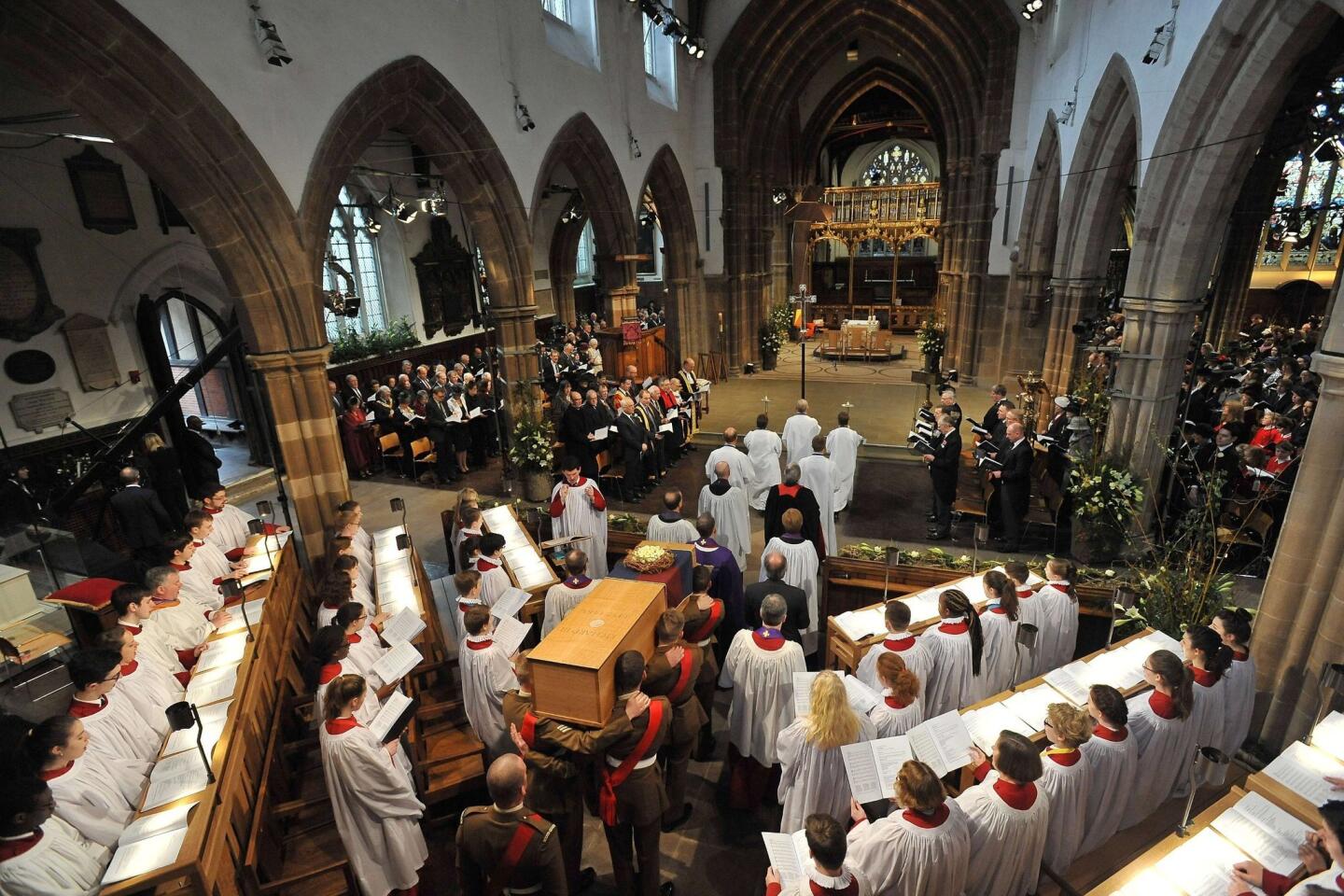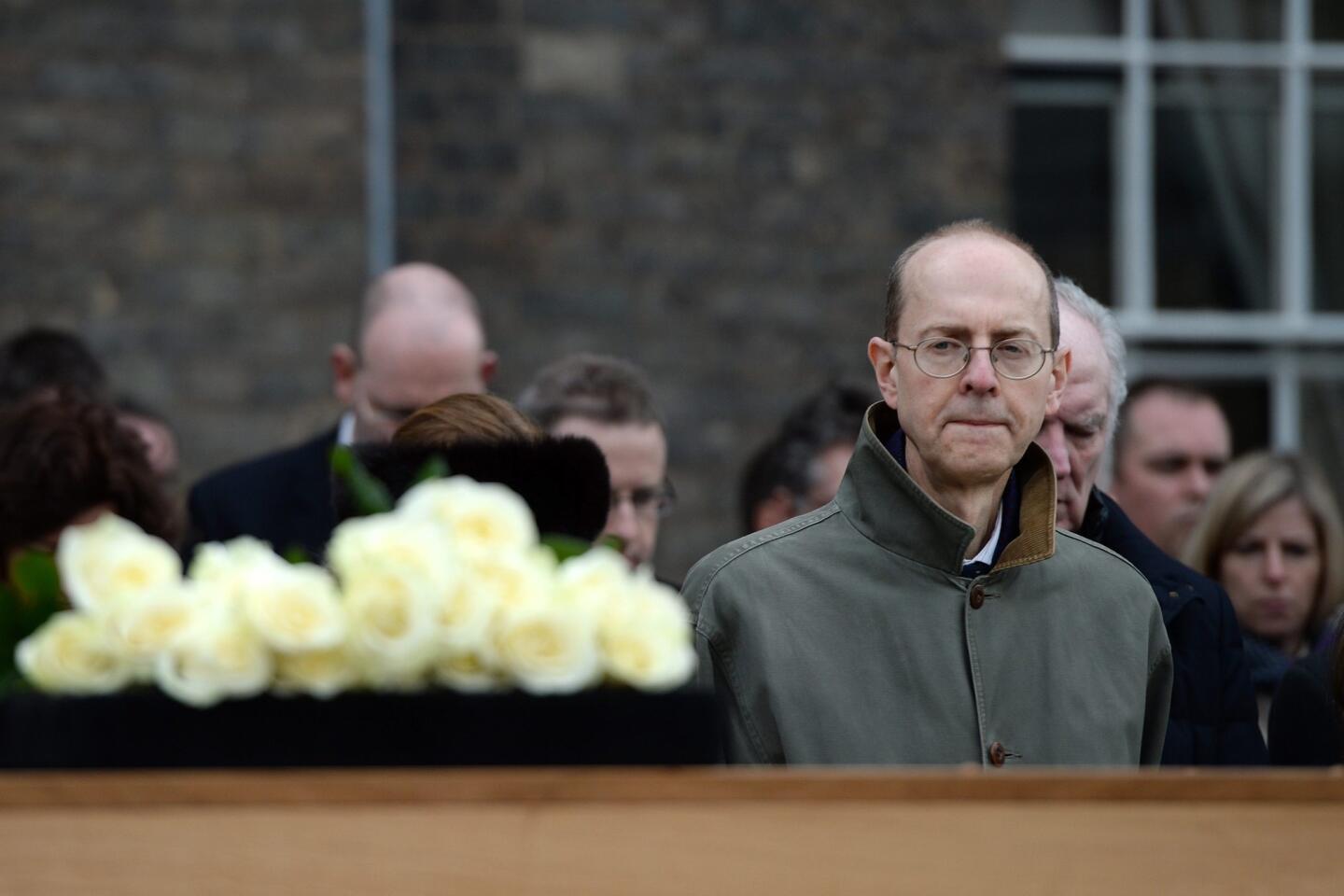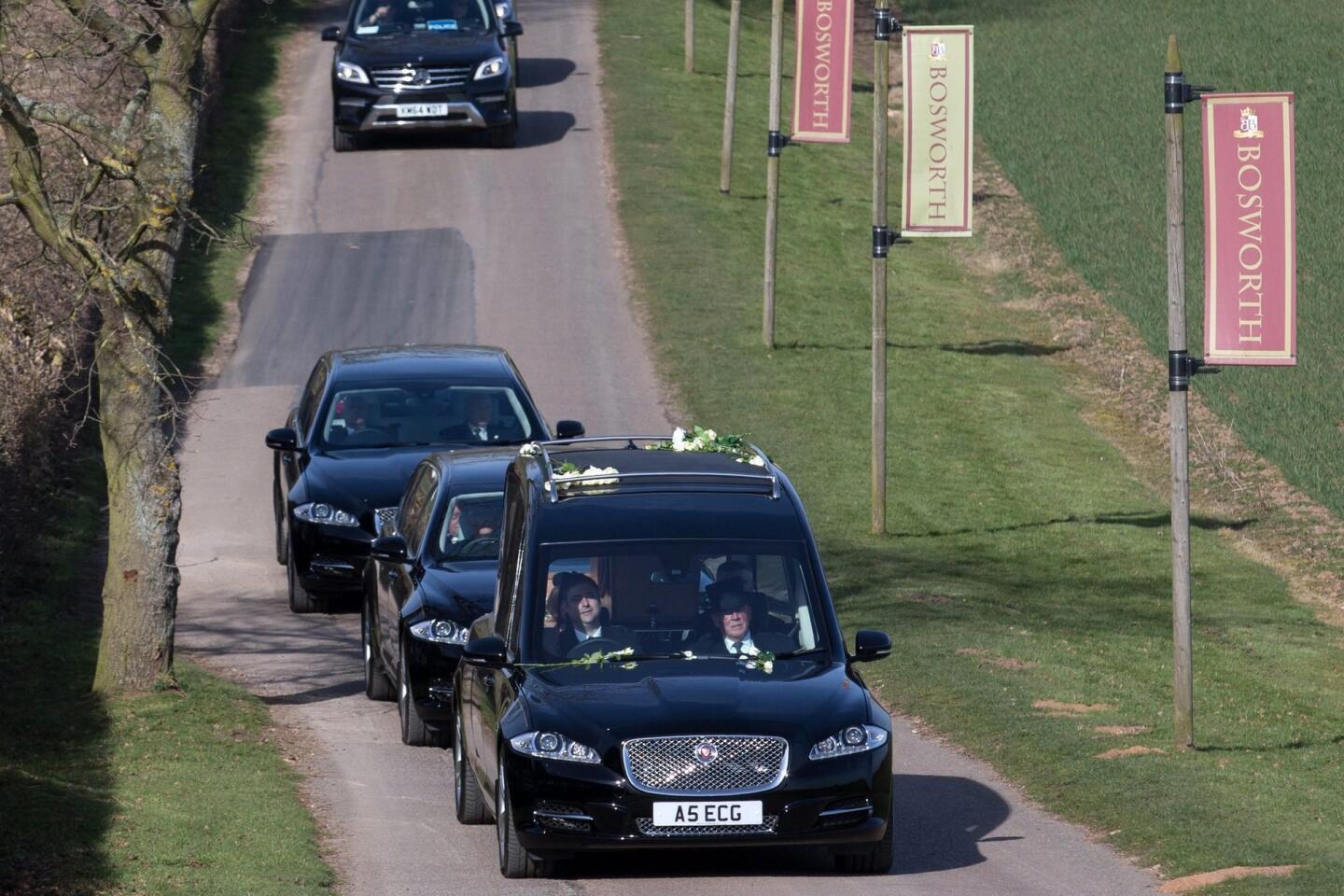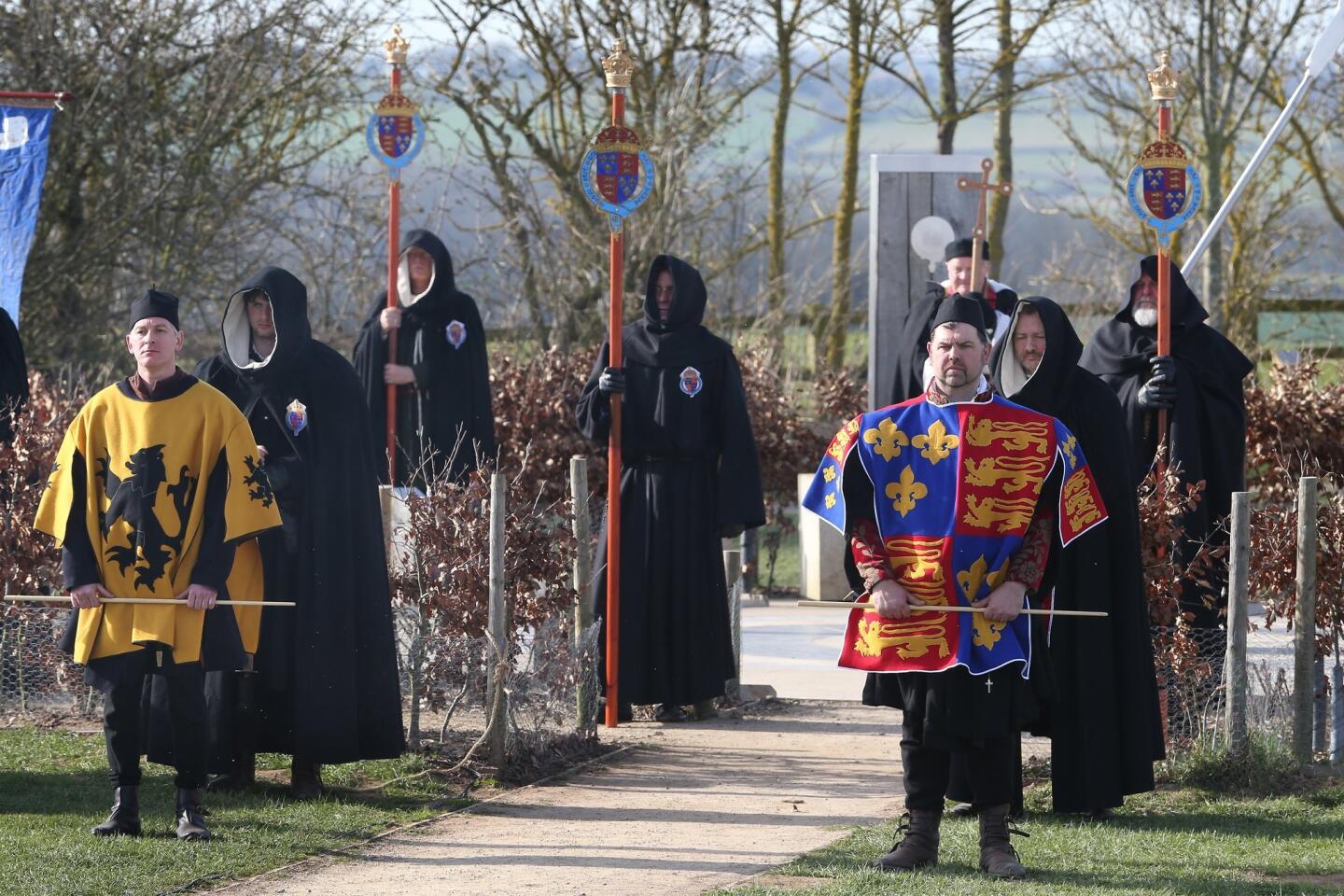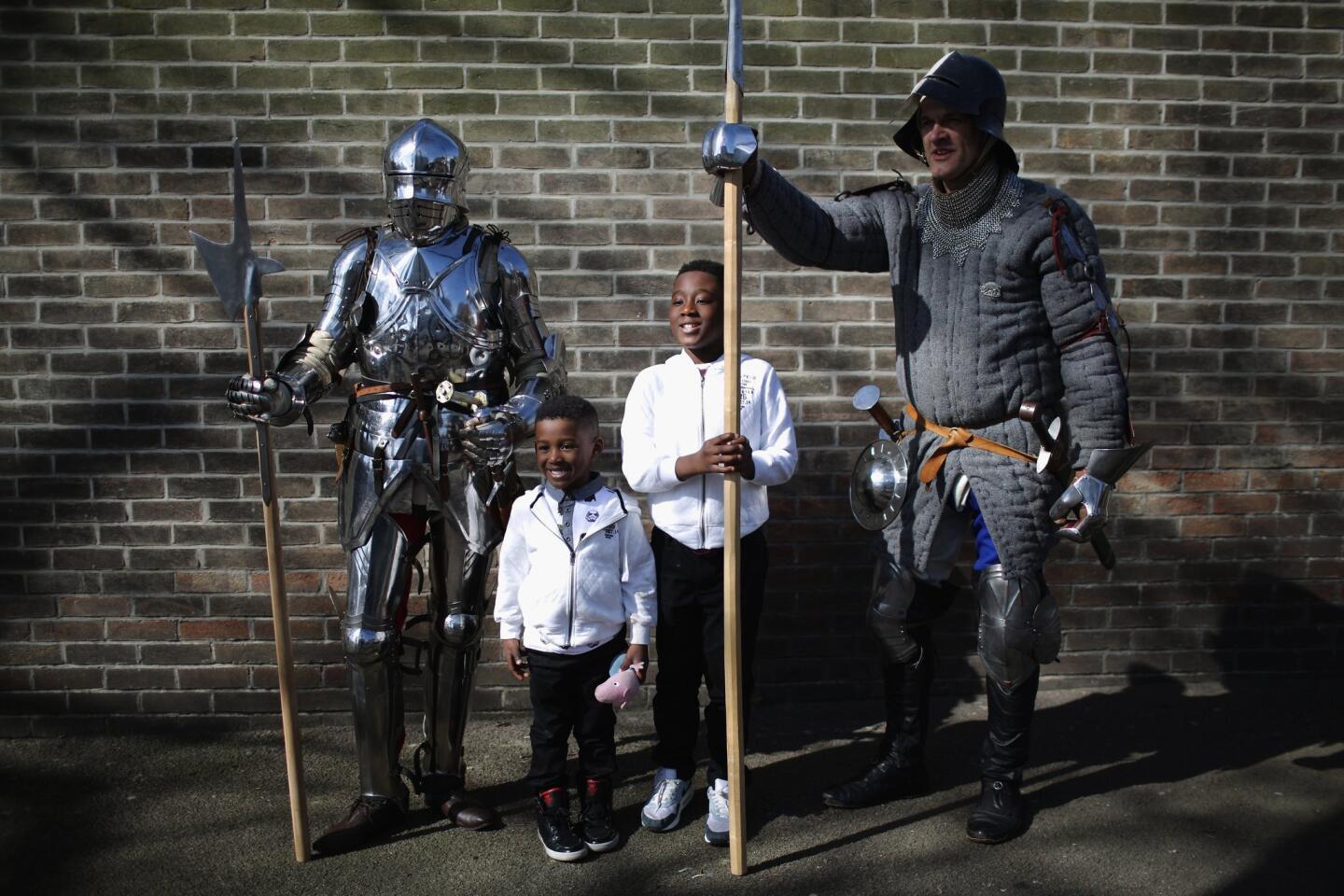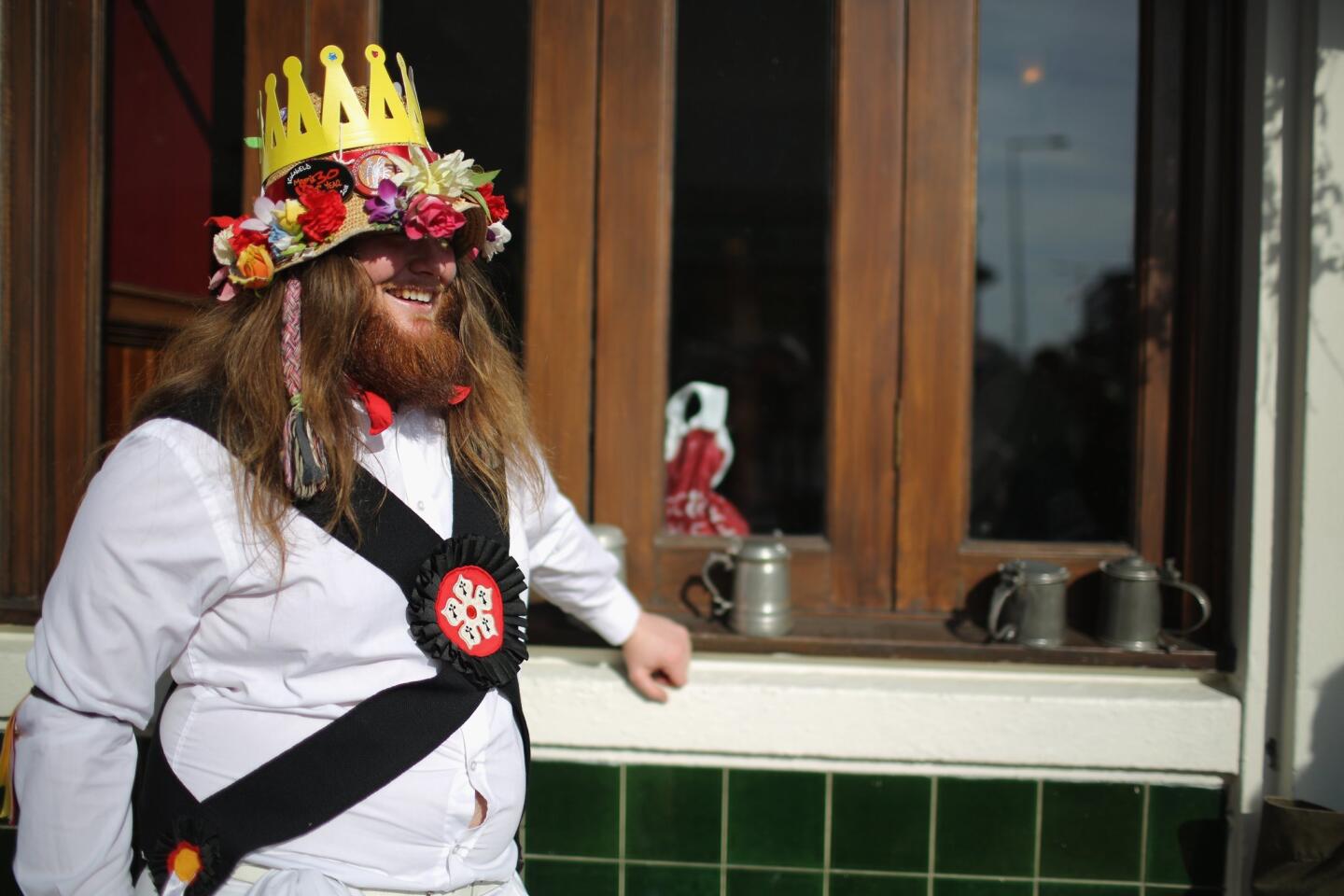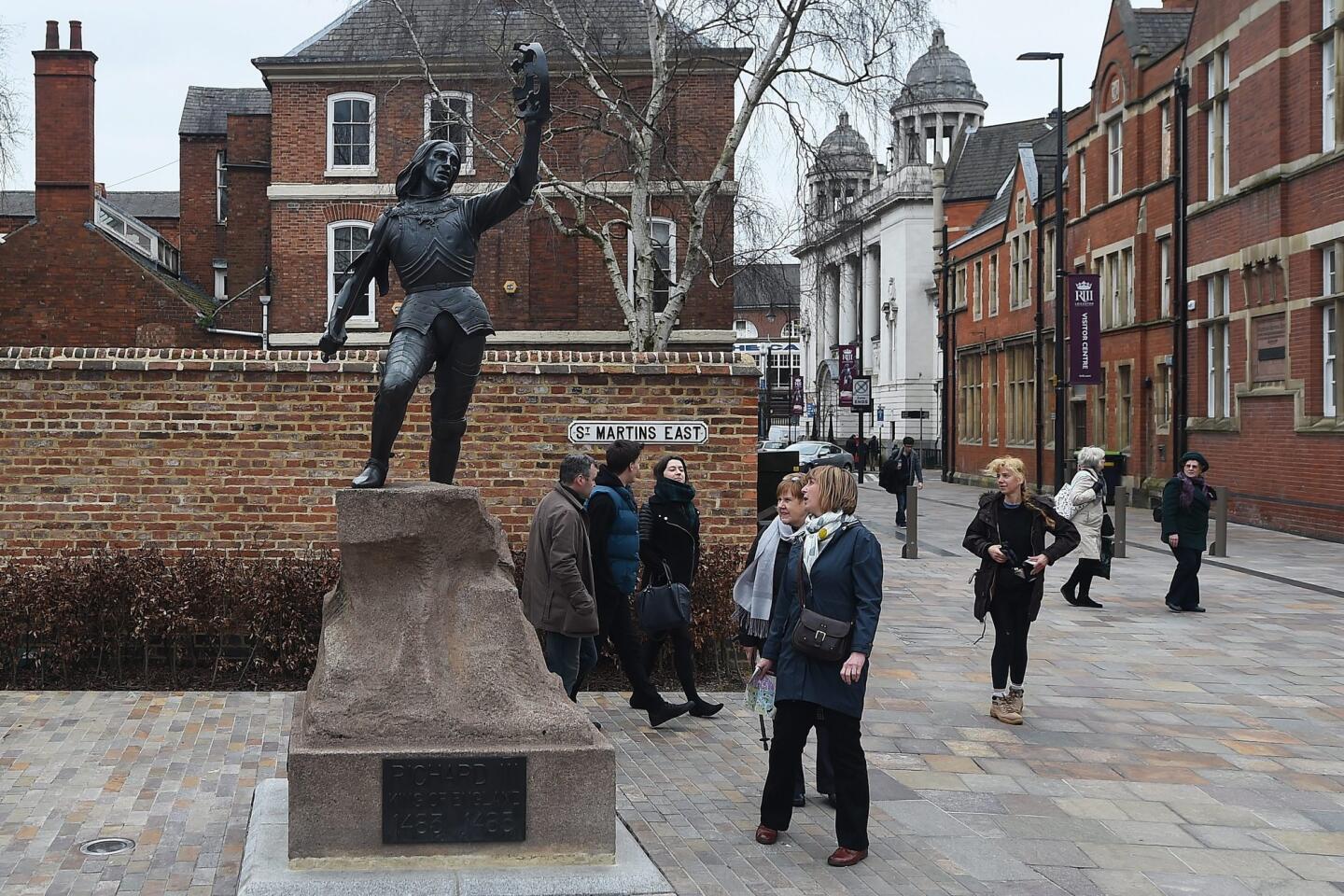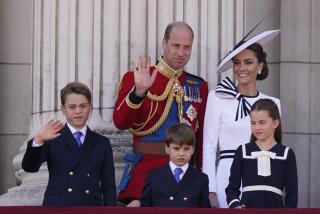A day of pageantry and gallantry for King Richard III
A hush descended on the crowd as the oak coffin inched into view.
The narrow streets in Leicester’s city center, typically bustling with shoppers on a Sunday afternoon, were packed but virtually motionless as a scene from Britain’s heraldic past unfurled like a dream.
Necks craned and phones were lifted aloft as knights in full body armor rode by, balanced somewhat precariously on horses. Metal breastplates and helmets glistened in the late afternoon sun.
Then came the sight everyone was waiting for. A horse-drawn gun carriage pulled into view, carrying a simple wooden coffin embossed with the name of the king whose remains lay inside: Richard III.
Single white roses were thrown into the air by spectators, some coming to rest on top of the coffin, which was also inscribed with the dates of Richard’s birth and death: 1452–1485.
It was a funeral procession of sorts, but unlike any witnessed before in this historic town of 330,000, about 100 miles north of London.
Here, on their way to reburial, were the remains of a man who had ruled England for just two years, but whose untimely death at the Battle of Bosworth changed the course of British history, and whose legacy has never been fully acknowledged.
The story of Richard III has been marked by controversy and intrigue.
He was the last English king to die in battle, and the last king of the Plantagenet era.
His death in battle ended the drawn-out conflict, known as the War of the Roses, between Richard’s House of York and the House of Lancaster.
He was succeeded by Henry Tudor, who later became Henry VII, and is an ancestor of the modern royal family.
History was not kind to Richard III. His reputation was tarnished by successors who portrayed him as a power-hungry, murderous villain. Generations grew up believing he was responsible for the deaths in the Tower of London of his young nephews, who were princes and his rivals to the throne.
That image was solidified by a damning play by Shakespeare, who portrayed Richard as a conniving hunchback. The play culminates with his death in battle after he loses his horse and cries, “A horse! A horse! My kingdom for a horse!”
It is a version of events his loyal supporters have doggedly refused to believe.
They branded him a social reformer who brought fairness to the British judicial system by introducing the concept of the presumption of innocence and bail, and they fought long and hard to determine where his remains were buried so he could finally be laid to rest with the dignity and respect he deserved.
Historians believed he had been hastily buried in the grounds of a Greyfriars church by Franciscans, and archaeologists used old maps to determine where the long-demolished medieval priory used to be.
A dig undertaken by the Richard III Society ultimately led to the discovery of bones beneath a municipal parking lot in Leicester in 2012.
The grave was too short for the occupant, whose body appeared to have been lowered into it naked and devoid of jewelry, but researchers were ultimately able to prove it was the long-lost king by finding modern-day relatives and taking DNA samples.
Another vital clue was that the skeleton showed the person had scoliosis, or curvature of the spine, which gave Richard III his “hunchback.”
After nearly three years of painstaking research on the remains at the University of Leicester, longer than Richard’s reign as monarch, the coffin carrying what is left of his body finally came into view about 11 a.m. Sunday.
What followed was a remarkable day of pageantry and gallantry that saw those remains led on a 22-mile journey past the most significant places in his life.
It included the field in Bosworth where he rode into battle with his crown atop his helmet and lost his life.
An open-air service was conducted there by the bishop of Leicester, Tim Stevens, and the fields were packed with well-wishers and battle reenactors. A minute’s silence was followed by a 21-gun salute before cadets flanked the coffin as it continued on its journey back toward Leicester Cathedral.
As the procession came to an end, University of Leicester professor Richard Buckley, the lead archaeologist on the project, officially transferred the care of Richard III’s remains to the cathedral.
The coffin was brought inside by six pallbearers as bells tolled, and it was covered with a specially embroidered black pall, a Bible and a crown.
The mood inside the cathedral was somber and reflective, even emotional for some.
“When I first saw the coffin coming through the doors, I was wiping away a tear, I don’t mind admitting that,” said Richard Green, 50. “This is something that’s never going to happen again, the opportunity to be here is wonderful.”
The Leicestershire County Council said more than 35,000 people lined the streets and country lanes Sunday and more are expected to file past the coffin in coming days as it remains near the altar until a reinterment ceremony Thursday.
Outside the cathedral, the symbol “RIII” with a crown above was projected onto the tower of the cathedral as the service ended.
And more white roses were being laid at the base of a bronze statue of Richard III nearby. It depicts him standing, immortalized, a sword in his right hand and his crown held up to the sky in his left.
“I had to pinch myself every so often to realize the significance of the event,” said Mike Fowler, 68, shortly after leaving the service in the cathedral.
“It was easy to think you were in a normal church service but then I remembered it was the king of England in there, and it’s 500 years later. Then you’re brought back to earth and you realize you’re in a rather privileged position.”
His wife, Pat, nodded in agreement. “It was better than winning the lottery,” she said.
Boyle is a special correspondent.
ALSO:
King Richard III’s DNA opens a door to a new historical mystery
In the battle for King Richard III’s remains, the city of Leicester beats out York
More to Read
Sign up for Essential California
The most important California stories and recommendations in your inbox every morning.
You may occasionally receive promotional content from the Los Angeles Times.

